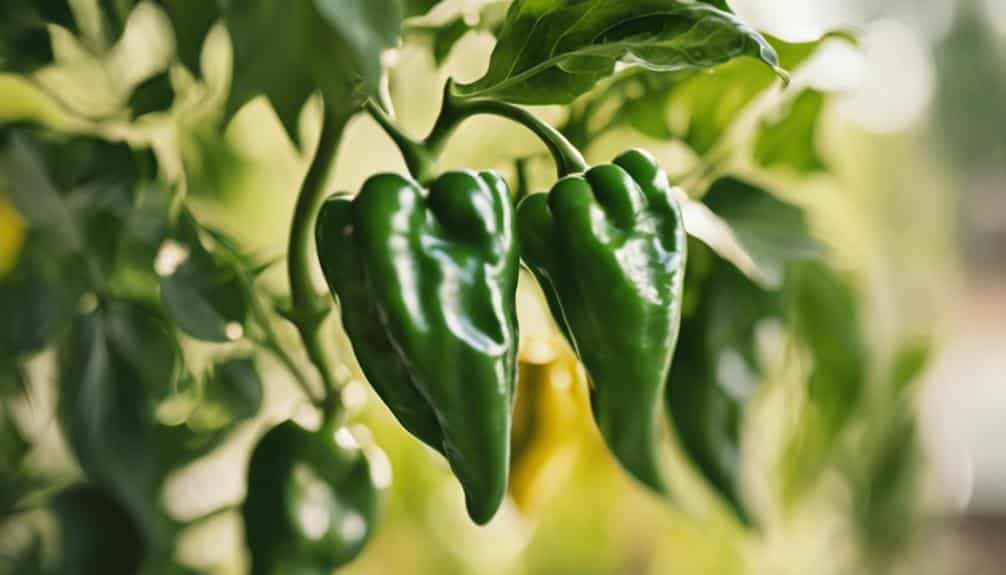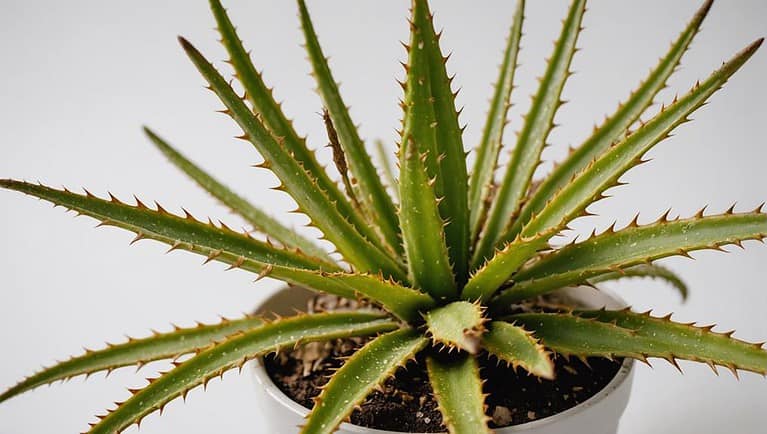Pepper Plant Leaves Turning Yellow
If you see your pepper plant's leaves turning yellow, it could mean something is wrong. It might need more nutrients like nitrogen, magnesium, or iron.
Check if you're watering it enough and adjust as needed. Make sure the soil drains well and use balanced fertilizers.
Keep an eye out for bugs or diseases and take care of them early. By fixing these issues, you can help your pepper plant get back to being healthy and growing well.
TLDR
- Yellow pepper leaves might mean the plant lacks nitrogen, so use a balanced fertilizer with NPK.
- Feel the top 2 inches of soil to check for moisture and avoid giving too much water, which can turn leaves yellow.
- Look out for bugs and diseases regularly; use neem oil or insecticidal soap to get rid of them.
- Yellow patches between veins could be a sign of not enough magnesium; try using Epsom salts to fix it.
- Make sure the soil drains well and adjust how often you water based on what the plants need to keep their leaves from turning yellow.
Identifying Nutrient Deficiencies

When you see your pepper plant's yellow leaves, check for nutrient problems. Older leaves turning yellow might mean not enough nitrogen.
Yellow patches between veins could be a lack of magnesium. If young leaves are yellow with green veins, it might be an iron issue.
Use a balanced NPK fertilizer for general yellowing. To fix magnesium issues in jalapeño plants, try Epsom salts.
Identify the exact nutrient problem to help your pepper plant get better. Nutrient problems can be fixed with the right steps, so examine your plant's leaves carefully and act accordingly.
Watering Practices for Healthy Plants
Now that you've checked for lack of nutrients, let's focus on another important part of taking care of pepper plants: giving them the right amount of water to help them grow well.
When watering, it's important to find the right balance. Check the soil often, and only water when the top 2 inches feel dry to the touch. Adjust how often you water based on what your plant needs and the environment it's in.
Make sure the soil drains well to avoid too much water sitting around and causing root problems. Putting a layer of mulch around the plants can keep the soil moist without overdoing it.
Pest and Disease Management Strategies

It's important to keep an eye on your pepper plants and check for pests or diseases regularly. These problems can make the leaves turn yellow. Checking for pests often can help you catch any issues early on.
You can use neem oil or insecticidal soap to control pests effectively. Remember to use these pesticides carefully and follow safety guidelines to protect your plants. When you see pests, focus on the affected areas instead of spraying chemicals all over the plants.
Keeping your garden clean and healthy is key to preventing pests and diseases that cause yellow leaves. By taking these steps and being proactive, you can stop yellowing leaves and keep your pepper plants healthy and thriving.
Diagnosing Yellowing Leaf Symptoms
Now that you've dealt with pests and diseases, let's look into why your pepper plant leaves are turning yellow. Check if the older leaves are yellow first, which could mean they lack nitrogen.
Yellow patches between leaf veins might signal a magnesium shortage. If young leaves are yellow, it could be an iron deficiency. Water properly and ensure good soil drainage to prevent yellowing.
Keep an eye out for pests and use natural methods like neem oil. By figuring out the root cause, you can fix the issue and help your pepper plants grow well.
Addressing Nutrient Deficiencies Effectively

To fix the yellowing leaves on your pepper plant, figure out which nutrients are lacking. Look for signs like yellow leaves or slow growth. Use balanced fertilizers to give your plant what it needs.
Learn how to spot nutrient problems and give your jalapeño plants the right help to stop the yellowing leaves.
Nutrient Deficiency Signs
When your pepper plant leaves turn yellow, it might be due to a lack of nutrients. This can show up in different ways, so it's important to figure out which specific nutrient is missing.
If the older leaves are yellowing, it could be a lack of nitrogen. If you see yellow spots between the veins on your jalapeño leaves, it might mean there's not enough magnesium.
Look closely at the symptoms to pinpoint the issue and take the right steps to fix it. Don't assume it's just a general lack of nutrients – pay attention to the specific signs and act accordingly.
This way, you can give your pepper plant the right nutrients it needs to stay healthy.
Balanced Fertilizer Application
To fix nutrient problems, give your pepper plant a balanced fertilizer with equal parts of nitrogen, phosphorus, and potassium. This helps stop leaves from turning yellow by giving your plant all the nutrients it needs.
Use fertilizers like 10-10-10 or 5-5-5 for a healthy pepper plant. By regularly using balanced fertilizers based on your plant's needs, you can prevent and fix nutrient issues that cause yellow leaves.
Using balanced fertilizer will help your pepper plant grow well with lush green leaves. Remember, giving the right fertilizer is important for a happy and thriving pepper plant.
Preventing Yellowing Leaves Naturally
To stop your pepper plants' leaves from turning yellow, you can do some simple things naturally. First, test your soil to see if it lacks any important nutrients and add what's needed.
Use natural ways like neem oil or soapy water to keep pests away from harming your plants. Check the underside of the leaves often for any signs of pests and adjust how much you water based on how damp the soil is. This will help avoid root rot and yellow leaves.
Also, use things like mulch to keep the soil moist the right way. By doing these things, you can create a healthy place for your pepper plants to grow well and not get yellow leaves.
Common Causes of Yellow Leaves

To keep your pepper plants healthy, it's important to figure out why their leaves are turning yellow. Lack of nutrients like nitrogen, phosphorus, or potassium could be the reason.
Make sure you water your plants just enough, as too much or too little water can also cause yellow leaves.
Pests like mites, aphids, and psyllids can damage your plants too.
Understanding these common reasons can help you fix the problem and make your pepper plants healthy again.
Conclusion
You've started tackling the issue of yellow leaves on your pepper plant by learning about the common causes and solutions.
Now, it's time to act on what you know. By adjusting how you water your plant, dealing with pests and diseases, and fixing any nutrient problems, you can help your plant get back its healthy green color.
Keep an eye on your plant's progress and make changes as needed. With patience and determination, you can stop the leaves from turning yellow and have a thriving pepper plant.






